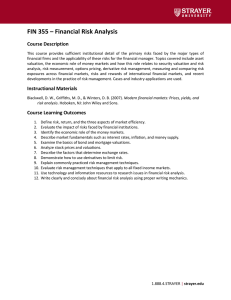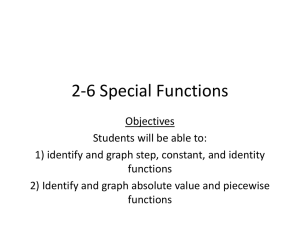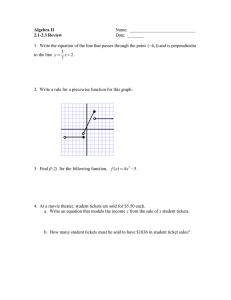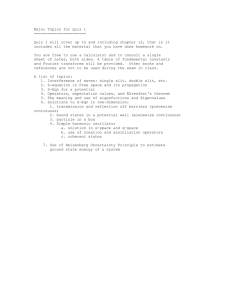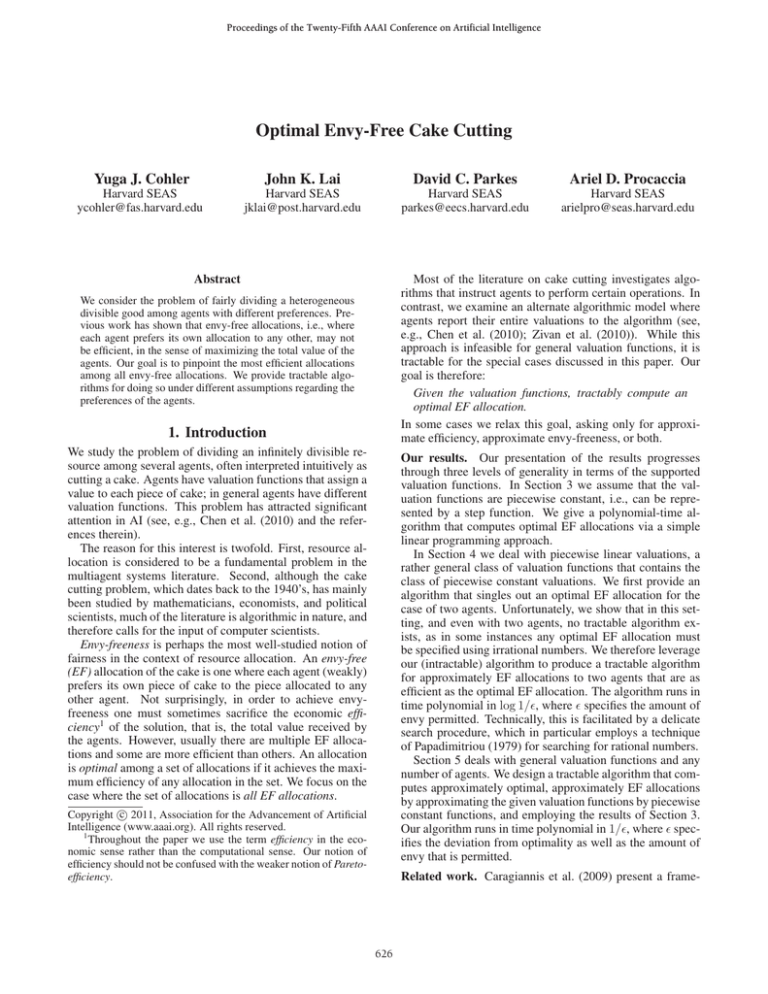
Proceedings of the Twenty-Fifth AAAI Conference on Artificial Intelligence
Optimal Envy-Free Cake Cutting
Yuga J. Cohler
John K. Lai
David C. Parkes
Ariel D. Procaccia
Harvard SEAS
ycohler@fas.harvard.edu
Harvard SEAS
jklai@post.harvard.edu
Harvard SEAS
parkes@eecs.harvard.edu
Harvard SEAS
arielpro@seas.harvard.edu
Most of the literature on cake cutting investigates algorithms that instruct agents to perform certain operations. In
contrast, we examine an alternate algorithmic model where
agents report their entire valuations to the algorithm (see,
e.g., Chen et al. (2010); Zivan et al. (2010)). While this
approach is infeasible for general valuation functions, it is
tractable for the special cases discussed in this paper. Our
goal is therefore:
Given the valuation functions, tractably compute an
optimal EF allocation.
In some cases we relax this goal, asking only for approximate efficiency, approximate envy-freeness, or both.
Abstract
We consider the problem of fairly dividing a heterogeneous
divisible good among agents with different preferences. Previous work has shown that envy-free allocations, i.e., where
each agent prefers its own allocation to any other, may not
be efficient, in the sense of maximizing the total value of the
agents. Our goal is to pinpoint the most efficient allocations
among all envy-free allocations. We provide tractable algorithms for doing so under different assumptions regarding the
preferences of the agents.
1. Introduction
We study the problem of dividing an infinitely divisible resource among several agents, often interpreted intuitively as
cutting a cake. Agents have valuation functions that assign a
value to each piece of cake; in general agents have different
valuation functions. This problem has attracted significant
attention in AI (see, e.g., Chen et al. (2010) and the references therein).
The reason for this interest is twofold. First, resource allocation is considered to be a fundamental problem in the
multiagent systems literature. Second, although the cake
cutting problem, which dates back to the 1940’s, has mainly
been studied by mathematicians, economists, and political
scientists, much of the literature is algorithmic in nature, and
therefore calls for the input of computer scientists.
Envy-freeness is perhaps the most well-studied notion of
fairness in the context of resource allocation. An envy-free
(EF) allocation of the cake is one where each agent (weakly)
prefers its own piece of cake to the piece allocated to any
other agent. Not surprisingly, in order to achieve envyfreeness one must sometimes sacrifice the economic efficiency1 of the solution, that is, the total value received by
the agents. However, usually there are multiple EF allocations and some are more efficient than others. An allocation
is optimal among a set of allocations if it achieves the maximum efficiency of any allocation in the set. We focus on the
case where the set of allocations is all EF allocations.
Our results. Our presentation of the results progresses
through three levels of generality in terms of the supported
valuation functions. In Section 3 we assume that the valuation functions are piecewise constant, i.e., can be represented by a step function. We give a polynomial-time algorithm that computes optimal EF allocations via a simple
linear programming approach.
In Section 4 we deal with piecewise linear valuations, a
rather general class of valuation functions that contains the
class of piecewise constant valuations. We first provide an
algorithm that singles out an optimal EF allocation for the
case of two agents. Unfortunately, we show that in this setting, and even with two agents, no tractable algorithm exists, as in some instances any optimal EF allocation must
be specified using irrational numbers. We therefore leverage
our (intractable) algorithm to produce a tractable algorithm
for approximately EF allocations to two agents that are as
efficient as the optimal EF allocation. The algorithm runs in
time polynomial in log 1/, where specifies the amount of
envy permitted. Technically, this is facilitated by a delicate
search procedure, which in particular employs a technique
of Papadimitriou (1979) for searching for rational numbers.
Section 5 deals with general valuation functions and any
number of agents. We design a tractable algorithm that computes approximately optimal, approximately EF allocations
by approximating the given valuation functions by piecewise
constant functions, and employing the results of Section 3.
Our algorithm runs in time polynomial in 1/, where specifies the deviation from optimality as well as the amount of
envy that is permitted.
c 2011, Association for the Advancement of Artificial
Copyright Intelligence (www.aaai.org). All rights reserved.
1
Throughout the paper we use the term efficiency in the economic sense rather than the computational sense. Our notion of
efficiency should not be confused with the weaker notion of Paretoefficiency.
Related work. Caragiannis et al. (2009) present a frame-
626
are additive, i.e. Vi (X ∪ Y ) = Vi (X) + Vi (Y ) if X and Y
are disjoint, and non-atomic, i.e., Vi ([x, x]) = 0. Because of
the latter property, we can treat open and closed intervals as
equivalent. We assume that agents have equal weight, and
in particular their valuation functions are normalized so that
the entire cake gives each agent value one, that is, for all
1
i ∈ N , 0 vi (x)dx = 1.
An allocation A = (X1 , . . . , Xn ) is an assignment of a
piece of cake Xi to each agent, ensuring that the Xi are disjoint. Two notions of fairness have been studied in the cake
cutting literature. An allocation is proportional with respect
to V1 , . . . , Vn if Vi (Xi ) ≥ 1/n for all i ∈ N , and envyfree (EF) with respect to V1 , . . . , Vn if Vi (Xi ) ≥ Vi (Xj ) for
all i, j ∈ N . Envy-freeness ensures that each agent weakly
prefers the piece it is given and implies
proportionality when
the entire interval is allocated, i.e., i Xi = [0, 1].
Because of normalization, it is meaningful to consider the
sum of agent valuations and define the efficiency of an allocation A, denoted by e(A), as the sum of agent values, i.e.,
work for quantifying the efficiency loss due to fairness requirements, including envy-freeness, under general valuation functions. Their price of envy-freeness is the worst-case
ratio between the total utility under an (unconstrained) optimal allocation, and the total utility under an optimal EF
allocation.
Caragiannis et al. provide a lower bound of
√
Ω( n) and a weak upper bound of O(n) on the price of
envy-freeness, where n is the number of agents. Note that
an upper bound singles out in every instance (set of valuation
functions) an allocation that achieves a certain ratio (O(n)
in this case), but makes no claim as to the optimality of the
allocation.
Reijnierse and Potters (1998) design a clever but involved
and computationally demanding algorithm that computes a
Pareto-efficient EF allocation, i.e., an EF allocation such that
no other EF allocation is at least as good for all the agents
and better for at least one agent, when agents hold piecewise
constant valuations. The core of their algorithm involves
a procedure for solving a market clearing problem, which
can also be solved approximately using the Eisenberg-Gale
convex program (Eisenberg and Gale 1959) or exactly using
methods developed by Devanur et al. (2002). Crucially, it is
easy to see that an optimal EF allocation is also a Paretoefficient EF allocation. Therefore, the results we present
in Section 3 provide, as a special case, a simple alternative for computing a Pareto-efficient EF allocation, also under piecewise constant valuations. Reijnierse and Potters
ultimately use their algorithm to compute approximately
Pareto-efficient EF allocations under general valuations; our
approximation approach for general valuations, presented in
Section 5, is inspired by theirs.
Zivan et al. (2010) present a way to find Pareto-efficient
EF allocations that reduce untruthful manipulations, also assuming agents hold piecewise constant valuations. We do
not examine strategic issues in this paper, as we discuss below.
Nuchia and Sen (2001) provide a procedure which starts
from an externally given EF allocation and improves its efficiency while maintaining envy-freeness. However, this procedure is not guaranteed to produce an optimal EF allocation. In Section 4 we do provide such a guarantee by starting
from an efficient allocation and improving its envy-freeness.
For general valuations, computing EF allocations is notoriously difficult (see, e.g., Procaccia (2009, Section 1)).
However, there is a known approach for computing -EF allocations via Sperner’s Lemma (Su 1999). If one is only interested in approximate envy-freeness, our approach is comparably simple, but significantly more general as it makes it
possible to also optimize efficiency.
e(A) =
n
Vi (Xi ).
i=1
An allocation A is optimal amongst a set of possible allocations S if e(A) = maxA ∈S e(A ). In particular, we will be
interested in computing an optimal allocation when S is the
set of EF allocations.
In our algorithmic model, agents report their valuations
V1 , . . . , Vn to the algorithm, which makes an allocation
based on these reports. These reports may differ from the
agent’s true valuations. We do not consider truthful algorithms and so our algorithms can be thought to compute optimal EF allocations with respect to reported valuations, or
one can assume agents are truthful. We ignore this distinction in the sequel and adopt value density vi and value Vi in
describing our algorithms.
3. Piecewise Constant Valuations
The first family of valuation functions that we consider is
the family of piecewise constant valuations. A valuation
function is piecewise constant if the associated value density function is piecewise constant, that is, the cake can be
partitioned into a finite number of subintervals such that the
density function is constant on each interval.
Our purpose in studying piecewise constant valuation
functions is twofold. First, there are realistic situations that
are captured by such valuation functions. For example, think
of the cake as time, in the context of advertising or access to
a shared resource. Agents may be interested only in specific
time slots (e.g., during the commercial break of a specific
program), but are indifferent between different parts of the
desired slot. Second, the results of this section will be leveraged in Section 5 to address general valuations.
The main result of this section is a simple polynomialtime algorithm for finding an optimal EF allocation when
agents have piecewise constant valuations. In order to discuss computational complexity, we must describe the representation of the input to the algorithm. While general valuation functions do not admit concise descriptions, piecewise
2. The Model
The cake is modeled as the interval [0, 1], and there is a set of
agents N = {1, . . . , n}. A piece of cake X is a finite set of
disjoint subintervals of [0, 1]. Each agent is endowed with an
integrable, non-negative value density function vi (x) which
defines a value for each possible piece of cake. Specifically,
an
value Vi (X) for a piece of cake X is given by
agent’s
I∈X I vi (x)dx. Defined in this manner, agent valuations
627
Algorithm 1
1. Mark the boundaries of the reported intervals of all agents,
as well as 0 and 1.
2
1
2. Let J be the set of subintervals of [0, 1] formed by consecutive marks.
3. Solve the following linear program:
max
n
xiI Vi (I)
0
0
s.t.
xiI ≤ 1 ∀I ∈ J
i=1
I∈J
xiI Vi (I) ≥
1
Figure 1: An illustration of piecewise contant value density functions, where n = 2 and the area under the density function of
agent 1 (resp., agent 2) is filled with horizontal (resp., vertical)
lines. Marks made by Algorithm 1 are represented by white circles
on the horizontal axis. Note that both value density functions are
constant between every pair of consecutive marks.
(1)
i=1 I∈J
n
0.5
(2)
xjI Vi (I) ∀i, j ∈ N (3)
I∈J
xiI ≥ 0 ∀i ∈ N, I ∈ J
4. Piecewise Linear Valuations
(4)
Piecewise linear valuations are a significantly more general
family of valuation functions that includes piecewise constant valuations. An agent’s valuation function is piecewise
linear if its value density function is piecewise linear. Piecewise linear functions offer added expressiveness, yet can still
be concisely represented. The agent’s valuation function can
be pinned down by breaking down [0, 1] into a set of subintervals on which the agent’s value density function has constant slope. The agent then specifies the boundaries of each
of these intervals as well as the slope and intercept of the
density function on the interval.
While Algorithm 1 exactly solves the piecewise constant
case, it is not directly generalizable to the piecewise linear
case. The algorithm relied on the fact that we could split
[0, 1] into a finite number of intervals on which agent value
densities were constant. This allowed us to focus only on
the fraction of each interval given to each agent rather than
the specific part of the interval. With piecewise linear valuations, it is not longer possible to split [0, 1] into a finite
number of intervals on which value densities are constant.
The main result of this section is an algorithm that finds
an optimal EF allocation for two agents when valuations are
piecewise linear.2 We first outline an abstract algorithm for
handling these valuation functions. We then prove an impossibility result that an exact implementation of this abstract
algorithm is intractable. We conclude by sketching an approximate implementation of the algorithm. An algorithm
for any number of agents is left open.
4. Return an allocation which for all i ∈ N and I ∈ J
allocates an xiI fraction of subinterval I to agent i.
constant functions have a conveniently simple representation. Each agent reports the boundaries of the inclusionmaximal intervals on which the agent’s density function is
constant, along with the value of the density function on
each of these intervals. The size of the input is the number
of bits required to report these parameters. We assume that
the boundaries of intervals as well as the value of the density function can be expressed as k-bit rationals, i.e., rational
numbers of the form a/b where a and b are k-bit integers.
Our procedure for finding an optimal EF allocation is formally given as Algorithm 1. Step 1 of the algorithm is illustrated in Figure 1.
The linear program (LP) in Step 3 has variables xiI for
each i ∈ N and I ∈ J (where J is defined in Step 2),
which represent the fraction of interval I given to agent i.
Crucially, the value density functions of all agents are constant on each interval I ∈ J , hence the value of each agent
interval I is xiI Vi (I), and the
i ∈ N for a fraction xiI of agent’s value for its piece is I∈J xiI Vi (I). The objective
function (1) then simply gives the efficiency of the allocation. The first constraint (2) ensures that the allocation of
each interval in J is valid, while the second constraint (3) is
simply the envy-freeness constraint. We have the following
result.
An abstract algorithm
At a high level, the algorithm starts with an optimal (not
necessarily EF) allocation, and transfers pieces to the envious agent until the agent is no longer envious. The crux of
the procedure lies in the choice of which pieces are given
to the envious agent. A key notion will be that of the ratio
between the density functions of agent 1 and agent 2.
Theorem 1. Assume that there are n agents with piecewise
constant valuation functions. Then Algorithm 1 computes an
optimal EF allocation in polynomial time.
Interestingly, setting the variables xiI to 1/n for every
i ∈ N and I ∈ J —allocating to each agent a 1/nfraction of each interval in J —produces an allocation where
Vi (Xj ) = 1/n for every i, j ∈ N ; this is what Chen et
al. (2010) call a perfect allocation. A perfect allocation is in
particular EF. So, under piecewise constant valuation functions finding an EF allocation is trivial, and computing an
optimal EF allocation only slightly less so.
Definition 2. Given x ∈ [0, 1] where v2 (x) = 0, the value
ratio at x is R(x) = v1 (x)/v2 (x).
2
Envy-freeness and proportionality are equivalent in the case of
two agents, so the algorithm equivalently finds an optimal proportional allocation.
628
Algorithm 2
1. If V1 (Y1≥2 ) ≥ 1/2 and V2 (Y2≥1 ) ≥ 1/2, give agent 1
Y1>2 , agent 2 Y2>1 .
(a) If V1 (Y1>2 ) ≥ 1/2, give Y1=2 to agent 2.
(b) Otherwise, divide Y1=2 so that agent 1 receives value
exactly 1/2.
2. Without loss of generality, assume V1 (Y1≥2 ) < 1/2. Give
Y1≥2 to agent 1. Let r∗ be the maximal r such that
V1 (Y1≥2 ∪ Y≥r ) ≥ 1/2. Give Y>r∗ to agent 1, and divide Y=r∗ so that agent 1 receives exactly value 1/2.
Proof of Theorem 3. Consider each of the cases specified by
Algorithm 2.
Case 1: V1 (Y1≥2 ) ≥ 1/2, V2 (Y2≥1 ) ≥ 1/2. Algorithm 2
allocates Y1>2 to agent 1 and Y2>1 to agent 2. The allocation
made by Algorithm 2 is always efficient, since the agent who
strictly prefers an interval always receives it. What is left to
be shown is that the allocation is EF.
Case 1(a): V1 (Y1>2 ) ≥ 1/2. Algorithm 2 gives Y1=2 to
agent 2. V2 (Y2≥1 ) ≥ 1/2 by assumption. Both agents have
value at least 1/2, and by Lemma 4 are not envious.
Case 1(b): V1 (Y1>2 ) < 1/2. Algorithm 2 splits Y1=2 so
that agent 1 receives value exactly 1/2 after adding in Y1>2 .
This must be possible since V1 (Y1≥2 ) ≥ 1/2. Agent 1 is not
envious by Lemma 4. Let X2 be the piece given to agent 2
(the remaining portion of Y1=2 along with Y2>1 ). Algorithm
2 allocates the entire interval, so by additivity, V1 (X2 ) =
1/2. However, the piece X2 consists only of intervals where
v2 (x) ≥ v1 (x), so V2 (X2 ) ≥ V1 (X2 ) = 1/2.
Notationally, for i, j ∈ {1, 2} let Yi op j = {x ∈ [0, 1] :
vi (x) op vj (x)}, where op ∈ {>, ≥, =}. For instance,
Y1≥2 = {x ∈ [0, 1] : v1 (x) ≥ v2 (x)} . Let
Yop r = {x : (v1 (x) < v2 (x)) ∧ (R(x) op r)},
where op ∈ {>, ≥, =}. Using these notations we can
present our algorithm, given as Algorithm 2. In the rest of
this subsection we prove the following theorem.
Case 2: V1 (Y1≥2 ) < 1/2. First, note that Algorithm 2
finds an EF allocation X1 , X2 . Indeed, as before, agent 1
is not envious as V1 (X1 ) = 1/2. Since agent 2 is given
all the intervals not given to agent 1, V1 (X2 ) = 1/2. The
piece X2 consists only of intervals where v2 (x) > v1 (x), so
V2 (X2 ) ≥ V1 (X2 ) = 1/2.
Because V1 (Y1≥2 ) < 1/2, envy-freeness requires us to
sacrifice efficiency since we need to give agent 1 some intervals that are strictly preferred by agent 2. To show that
X1 , X2 is an optimal EF allocation, let X1 , X2 be any optimal EF allocation. Define the following three pieces of
cake:
Theorem 3. Assume that there are two agents with piecewise linear valuations. Algorithm 2 finds an optimal EF allocation.
Before proving Theorem 3, we establish a few useful lemmas.
Lemma 4. Suppose that agent i ∈ {1, 2} receives a piece of
cake Xi , with Vi (Xi ) ≥ 1/2. Agent i will not envy the other
agent.
A = X1 ∩ X1 ∩ Y2>1 ,
Proof. By additivity, Vi (Xi ) + Vi ([0, 1] \ Xi ) = 1. The
proposition follows by observing that the other agent receives at most [0, 1] \ Xi if agent i receives Xi .
B = (X1 \ X1 ) ∩ Y2>1 ,
C = (X1 \ X1 ) ∩ Y2>1 .
A gives the intervals where both allocations lose efficiency
due to giving piece preferred by agent 2 to agent 1. B gives
the intervals where X1 , X2 loses efficiency, and C gives the
intervals where X1 , X2 loses efficiency.
Let V1 (Y1≥2 ) = 1/2 − , > 0. Note that A ∩ B =
∅, A ∩ C = ∅, and A ∪ B = X1 ∩ Y2>1 , A ∪ C = X1 ∩ Y2>1 .
Algorithm 2 gives agent 1 exactly value 1/2 yielding:3
V1 (A) + V1 (B) =
v1 (x)dx +
v1 (x)dx = . (5)
Lemma 5. In any optimal EF allocation, V1 (X1 ) ≥ 1/2
and V2 (X2 ) ≥ 1/2.
Proof. To prove this lemma, we first show that any optimal
EF allocation allocates all intervals on which some agent
has strictly positive value. Suppose for contradiction that
there is some optimal EF allocation X1 , X2 that does not
allocate an interval I where v1 (I) > 0 or v2 (I) > 0. We
can augment X1 , X2 with an allocation of I that maintains
envy-freeness while improving efficiency. Indeed, assume
without loss of generality that V1 (I) > 0. Divide I into two
subintervals I , I such that V1 (I ) = V1 (I ). Allocate to
agent 2 the subinterval with higher value according to V2 ,
and give the remaining subinterval to agent 1. Efficiency
is improved because agent 1 receives strictly greater value
and agent 2 receives weakly greater value. Envy-freeness
is maintained since agent 1 is indifferent between the two
pieces, and agent 2 prefers the additional piece it receives.
Thus, all desired intervals are allocated to one of the
agents, so for i ∈ {1, 2}, Vi (X1 ) + Vi (X2 ) = 1, and envyfreeness requires that Vi (Xi ) ≥ 1/2.
A
B
Similarly, Lemma 5 says that since X1 , X2 is an optimal
EF allocation, agent 1 must receive value at least from its
allocation of Y2>1 :
V1 (A) + V1 (C) =
v1 (x)dx +
v1 (x)dx ≥ . (6)
A
C
Combining (5) and (6) yields
v1 (x)dx −
v1 (x)dx ≥ 0.
C
(7)
B
We slightly abuse notation and take the integral over A, B, C
to signify the sum of integrals over inclusion-maximal subintervals
of A, B, C respectively.
3
We are now ready to prove Theorem 3.
629
Let (X1 , X2 ) denote the difference between the efficiency
of the optimal allocation (not necessarily EF) and the efficiency of X1 , X2 .
(X1 , X2 ) = (v2 (x) − v1 (x))dx + (v2 (x) − v1 (x))dx
A
B
(X1 , X2 ) ≥ (v2 (x) − v1 (x))dx + (v2 (x) − v1 (x))dx
A
Theorem 6. There exist piecewise linear valuations whose
interval boundaries, slopes, and intercepts are all rational
numbers yet whose optimal EF allocations can only be specified with irrational numbers.
As a result, it is necessary to resort to approximation. Indeed, we relax envy-freeness by considering approximately
EF allocations. Specifically, an allocation is -EF if for
all i, j ∈ N , Vi (Xi ) ≥ Vi (Xj ) − (see, e.g., Lipton et
al. (2004)). The following theorem formally presents our
approximation guarantees.
C
X1 , X2
The loss for
is an inequality because while Algorithm 2 gives all of Y1>2 to agent 1, X1 , X2 need not and
may lose efficiency from those intervals as well.
To complete the proof, recall how Algorithm 2 constructs
X1 . Let r∗ be the value computed in Step 2 of Algorithm
2. By definition of Algorithm 2, X1 ∩ Y2>1 consists of all
points with R(x) > r∗ and some or all of the points with
R(x) = r∗ . Therefore, if x ∈ B then R(x) ≥ r∗ , and if
x ∈ C then R(x) ≤ r∗ . We conclude that
Theorem 7. Assume that there are two agents with piecewise linear valuations. For any > 0 there is an algorithm
that runs in time polynomial in the input and log(1/), and
finds an -EF allocation A such that e(A ) ≥ e(A), where
A is an optimal EF allocation.
The theorem’s proof is omitted due to lack of space, but
we give a very brief sketch. In the case considered in Step 1
of Algorithm 2, we would like to find a point x∗ such that
(X1 , X2 ) − (X1 , X2 )
≥
(v2 (x) − v1 (x))dx − (v2 (x) − v1 (x))dx
B
C v1 (x)
v1 (x)
=
− v1 (x) dx −
− v1 (x) dx
R(x)
R(x)
B
C
1
−1
v1 (x)dx −
v1 (x)dx
≥
r∗
C
B
≥ 0,
V1 (([0, x∗ ] ∩ Y1=2 ) ∪ Y1>2 ) = 1/2.
Using binary search over [0, 1], we find a point x that is
smaller but very close to x∗ . It is then possible to bound
the envy, while the resulting allocation is at least as efficient
as the optimal EF allocation. In Step 2 of Algorithm 2, we
need to search for a ratio r close to r∗ . This is more subtle,
because very small differences in |r − r∗ | can lead to significant differences in the derived value when there is a long
interval with constant value ratio. Fortunately, in this problematic case it can be shown that r∗ is a rational, and hence
it is sufficient to find the rational r closest to r∗ . This can be
done using a delicate search over rationals, via techniques
due to Papadimitriou (1979).
where the last inequality follows from (7).
Interestingly, Algorithm 2 does not make specific use of
the piecewise linearity assumption. In theory, it can be applied to more general classes of valuation functions, provided that the sets Y1>2 , Y1=2 , Y2>1 , Y≥r correspond to legal pieces of cake. However, we do use the piecewise linearity assumption in the next subsection.
5. General Valuations
In this section we give a method for handling general valuation functions (under some mild conditions) and for any
number of agents. We approximate general valuation functions with piecewise constant valuations and leverage Algorithm 1. We construct an allocation that is -EF and whose
efficiency is within of the optimal EF allocation. Our
central observation is the following lemma, whose proof is
omitted due to lack of space.
Implementing Algorithm 2
To discuss implementation details, we need to discuss the
representation of the input. As alluded to earlier, piecewise
linear valuations can be represented by asking agents to partition [0, 1] into intervals on which their value density functions have constant slope. The agents then report the boundaries of the intervals as well as the slope and intercept of the
density function on each interval. We assume that all points
can be specified with k-bit rationals. Since slopes and intercepts can be negative, in this section we take k-bit rationals
to include numbers of the form −a/b where a, b are k-bit
rationals.
While it is tempting to apply Algorithm 2 to produce an
optimal EF allocation, there is a barrier to this approach.
Even when the inputs are k-bit rational numbers, the r∗ defined in Step 2 of Algorithm 2 and the boundaries of the
resulting allocation may be irrational. In fact, this limitation is not specific to Algorithm 2. There are cases where
the allocation computed by Algorithm 2 is the unique optimal EF allocation and has irrational boundaries. The proof
is omitted due to lack of space.
Lemma 8. Given > 0 and value density functions
v1 , . . . , vn , suppose that v1 , . . . , vn are piecewise constant
value density functions such that for all i ∈ N ,
vi (x) ≤ vi (x) ≤ vi (x) + /2.
(8)
Let A = (X1 , . . . , Xn ) be an optimal EF allocation with
respect to valuations Vi (induced by vi ), and let A =
(X1 , . . . , Xn ) be an /2-EF allocation with respect to valuations Vi (induced by vi ). Then A is -EF and e(A ) ≥
e(A) − /2.
Given piecewise constant value density functions
v1 , . . . , vn that satisfy (8), it is easy to find an /2-EF
allocation A by applying Algorithm 1 to these valuations,
where the envy-freeness constraint (3) is relaxed by /2.
630
To find v1 , . . . , vn as required by Lemma 8, we assume
that v1 , . . . , vn are K-Lipschitz, i.e., for all x, y ∈ [0, 1],
|vi (x) − vi (y)| ≤ K · |x − y|.
Now, split [0, 1] into (4K)/ intervals of size at most
/(4K). Let S = {k/2p : k ∈ [0, M 2p ]}, where M is
an upper bound on vi (x) for all i ∈ N and x ∈ [0, 1], and
p will be specified later. For each interval I and agent i, let
v ∗ (I) = maxx∈I vi (x). For all x ∈ I let vi (x) = s∗ (I),
where s∗ (I) = min{s ∈ S : s ≥ v ∗ (I)}.
The K-Lipschitz condition ensures that the density function varies by at most /4 on each interval. Letting p =
2 + log(1/), s∗ (I) − v ∗ (I) ≤ /4, so vi satisfies condition 8.
While the K-Lipschitz condition rules out valuation density functions with discontinuities, our results extend to valuation density functions with a finite number of discontinuities that are K-Lipschitz on each continuous subinterval. In
particular, we can use the described procedure separately on
each continuous subinterval to find vi that satisfy (8). We
have the following theorem.
Theorem 9. Assume that there are n agents with value density functions v1 , . . . , vn that have a finite number of discontinuities, are K-Lipschitz on each continuous subinterval,
and have maximum value M . For any > 0, there is an
algorithm that runs in time polynomial in n, log M, K, 1/
and computes an -EF allocation whose efficiency is within
of the optimal EF allocation.
Given the rather strong Theorem 9, one may wonder in
what way the results of Section 4 are superior. In fact, for the
(interesting, we believe) case of two agents with piecewise
linear valuations, the method of Section 4 has two technical
advantages. First, it produces an -EF allocation that is as
efficient as the optimal EF allocation. Second, Theorem 7
provides running time that is polynomial in the representation and therefore logarithmic in the slope of the valuation
functions, as the slope is specified by O(k)-bit rationals. In
contrast, the running time in Theorem 9 is polynomial in the
slope (since the maximum slope determines the Lipschitz
constant), and hence exponential in the representation. Finally, note that piecewise linear (rather than constant) valuation functions can in theory be used to approximate general
valuations, making it possible to relax the assumptions of
Theorem 9 (when there are only two agents).
we cannot adopt this model. However, notice that Theorem 9 merely requires finding values that are close to vi (x)
for a polynomial number of points x ∈ [0, 1]; an implicit,
reasonable assumption is that the valuation information at
these points can be elicited from agents.
In contrast to Chen et al. (2010), we do not attempt to
design truthful algorithms. The algorithms of Chen et al.
are truthful and yield EF allocations, but these allocations
may be highly inefficient compared to other EF allocations.
Furthermore, it is known that a truthful algorithm cannot
produce efficient allocations (Thomson 2007). A natural
direction for future research is quantifying how much efficiency must be sacrificed to obtain truthfulness, in the spirit
of recent work on approximate mechanism design without
money (Procaccia and Tennenholtz 2009).
References
Caragiannis, I.; Kaklamanis, C.; Kanellopoulos, P.; and Kyropoulou, M. 2009. The efficiency of fair division. In
Proc. of 5th WINE, 475–482.
Chen, Y.; Lai, J. K.; Parkes, D. C.; and Procaccia, A. D.
2010. Truth, justice, and cake cutting. In Proc. of 24th AAAI,
756–761.
Devanur, N. R.; Papadimitriou, C. H.; Saberi, A.; and Vazirani, V. V. 2002. Market equilibrium via a primal-dual-type
algorithm. In Proc. of 43rd FOCS, 389–395.
Eisenberg, E., and Gale, D. 1959. Consensus of subjective probabilities: The pari-mutuel method. The Annals of
Mathematical Statistics 30(1):165–168.
Lipton, R. J.; Markakis, E.; Mossel, E.; and Saberi, A. 2004.
On approximately fair allocations of indivisible goods. In
Proc. of 6th EC, 125–131.
Nuchia, S. W., and Sen, S. 2001. Improving optimality of n
agent envy-free divisions. In Proc. of 8th ATAL, 277–289.
Papadimitriou, C. 1979. Efficient search for rationals. Information Processing Letters 8:1–4.
Procaccia, A. D., and Tennenholtz, M. 2009. Approximate
mechanism design without money. In Proc. of 10th EC, 177–
186.
Procaccia, A. D. 2009. Thou shalt covet thy neighbor’s cake.
In Proc. of 21st IJCAI, 239–244.
Reijnierse, J., and Potters, J. 1998. On finding an envyfree Pareto-optimal division. Mathematical Programming
83:291–311.
Su, F. E. 1999. Rental harmony: Sperner’s lemma in fair division. American Mathematical Monthly 106(10):930–942.
Thomson, W. 2007. Children crying at birthday parties.
Why? Journal of Economic Theory 31:501–521.
Zivan, R.; Dudı́k, M.; Okamoto, S.; and Sycara, K. P. 2010.
Reducing untruthful manipulation in envy-free Pareto optimal resource allocation. In Proc. of 10th IAT, 391–398.
6. Discussion
Interestingly, envy-freeness can be replaced with the weaker
notion of proportionality in all of our results. As mentioned in Section 2, any EF allocation is proportional, and
for the case of two agents the two notions coincide. Using the last observation, the results of Section 4 immediately
hold for proportionality. The results of Section 3 can easily be adapted by modifying (3), implying that the results of
Section 5 hold as well. The purpose of our focus on envyfreeness is to simplify the exposition.
In Sections 3 and 4 we assume, as in Chen et al. (2010),
that agents report their entire valuation function. This is possible because piecewise constant and piecewise linear valuations are concisely representable. Of course, in Section 5
631



